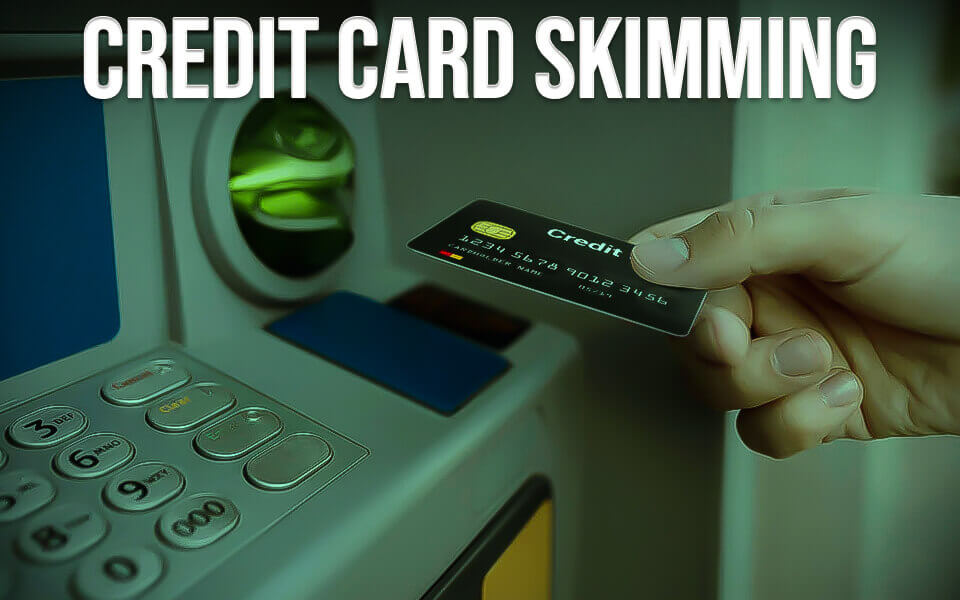


In today’s increasingly digital world, where electronic transactions have become the norm, the risk of unauthorized transactions also looms larger than ever. A popular electronic transaction method, Credit Card, has indeed made it easy for people to transfer money from one to another account but alongside that, it made it easier for scammers to perpetrate mischief too. In this article, we will discuss how scammers approach credit card skimming.
Insights into the nature and workings of this fraudulent practice will help you to safeguard yourself against this insidious practice. By understanding the techniques employed by scammers perpetrating credit card skimming and adopting preventive measures, you can shield your finances.
Credit card skimming refers to the illicit practice of obtaining sensitive information from a credit card without the cardholder’s knowledge or consent. It typically involves the use of a device, known as a skimmer, which is designed to secretly capture data from the magnetic stripe or chip of a credit card.
Skimmers are often placed on legitimate payment terminals, such as gas stations, ATMs, or point-of-sale devices, to record credit card details, including the card number, expiration date, and sometimes the cardholder’s name. This stolen information can then be used for fraudulent purposes, such as making unauthorized purchases or creating counterfeit credit cards. Skimming can result in financial losses, identity theft, and potential damage to an individual’s credit history.
As mentioned earlier, this credit card scam typically involves the use of a credit card skimming device that captures the cardholder’s information without their knowledge. Here’s a step-by-step explanation of how credit card skimming works:
If a credit card gets skimmed, several consequences and actions may follow:
To help prevent credit card skimming, consider implementing the following preventive measures:
If you lose funds due to credit card skimming, it’s crucial to act swiftly. Contact your credit card issuer immediately to report the unauthorized charges and request an investigation. Freeze or cancel the compromised card to prevent further fraudulent activity. Change your passwords for associated online accounts to protect your personal information.
Carefully review your credit card statements, noting fraudulent transactions for dispute. Monitor your credit report for any unauthorized accounts. File a police report to aid the investigation. To prevent future incidents, strengthen your security practices. Additionally, consider exploring fund recovery services.
Zecoup specializes in helping individuals recover lost funds resulting from credit card skimming and other forms of financial fraud. Our fund recovery specialists, with their expertise, conduct investigations, gather evidence, and document fraudulent transactions. Also, we have legal and financial professionals who provide guidance to the victims, communicate with financial institutions, and assist with dispute resolution. We understand the intricacies of the recovery process and can represent individuals in legal proceedings if necessary.
Aluminum foil creates a physical barrier that can potentially block or interfere with some radio frequency signals, it is not a reliable or practical solution to protect against credit card skimming. Credit card skimming typically involves the unauthorized collection of data from the magnetic stripe or chip of a credit card, rather than relying on radio frequency signals. Skimming devices are designed to read and capture the card information directly, regardless of any blocking material placed around the card.
Credit card skimmers can work on wireless technology, specifically through the use of Bluetooth or other wireless communication methods. Skimmers equipped with wireless capabilities can transmit stolen credit card data to a nearby receiver or a remote location, allowing criminals to access the compromised information without physically retrieving the skimming device.
Debit cards are not inherently easier to hack than credit cards. Both debit and credit cards can be susceptible to hacking or fraudulent activities. However, it's worth noting that debit cards are linked directly to a person's bank account, which means unauthorized transactions can have an immediate impact on their available funds. Credit cards, on the other hand, often offer stronger fraud protection and the ability to dispute charges before making a payment.
Contact us today to start the journey toward fund recovery and regain peace of mind.Zecoup is ready to help you navigate the complexities of credit card skimming incidents and work towards recovering your lost funds
